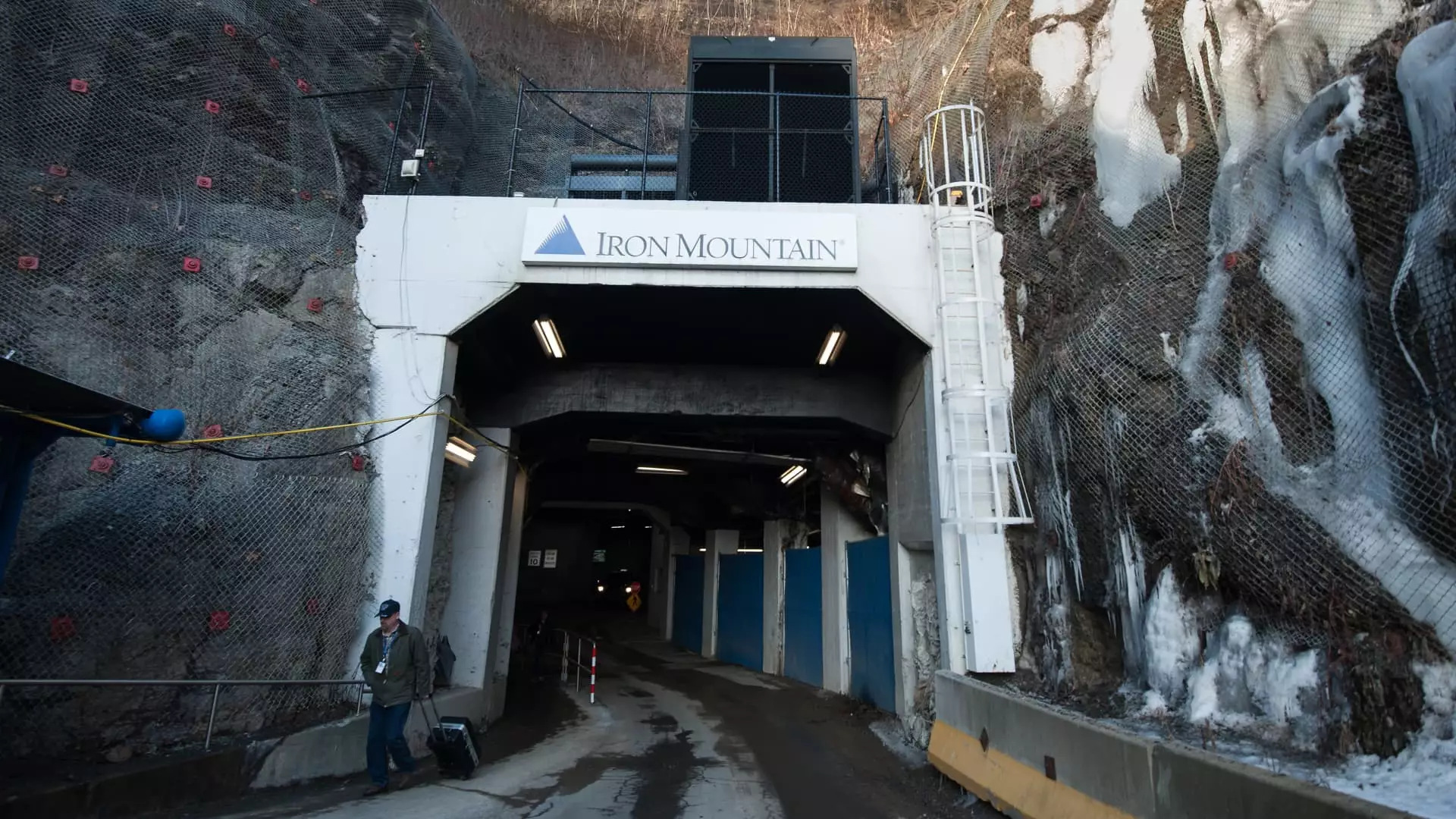Elon Musk, the renowned entrepreneur known for his groundbreaking ventures in technology and space exploration, has increasingly ventured into the realm of public governance. In a recent meeting with President Donald Trump, Musk drew attention to what he perceived as alarming inefficiencies within the federal government, particularly through his Department of Government Efficiency (DOGE). His observations regarding a limestone mine used for storing federal retirement paperwork have ignited discussions not only about government operations but also about the interplay between private enterprise and public sector efficiency.
The Mine as a Symbol of Inefficiency
Musk’s vivid description of the limestone mine, which has been in operation since 1955, painted a stark picture of bureaucratic stagnation. According to Musk, the outdated infrastructure of the mine serves as a metaphor for the broader issues plaguing government efficiency. He lamented how the mine’s slow elevator system essentially dictates the pace at which retirement applications are processed. With such vivid imagery, Musk effectively underscored a fundamental concern; the government’s approach to managing essential services is profoundly antiquated, almost stuck in a time warp.
This commentary is particularly striking given the increased scrutiny the Trump administration has focused on reducing government waste. By highlighting the mine’s deficiencies, Musk aimed to shake the foundations of a system that has long been criticized for its slow movement and ineffective workflows. His statement that individuals could contribute more positively to the economy outside of “carrying manila envelopes in a mine shaft” revealed an underlying belief in the potential for substantial reform in federal agencies.
Iron Mountain, the obscure company responsible for managing the limestone mine, faced immediate backlash following Musk’s remarks. While the company’s shares took a hit, CEO Bill Meaney offered a counter-narrative that could potentially stem the tide of pessimism surrounding the company’s future. During an earnings call, Meaney posited that the push for enhanced efficiency could actually lead to opportunities for growth, particularly through Iron Mountain’s efforts in data digitization and digital transformation for federal agencies.
This shift in focus from physical documentation storage to digitization represents a significant pivot for Iron Mountain. The company’s ability to attract federal contracts hinges on its adaptability; embracing technological advances and facilitating a more streamlined process for governmental operations are essential for securing its place in a changing landscape. This perspective encourages a more optimistic outlook for Iron Mountain amid criticism, suggesting that the company isn’t simply a relic of the past, but rather a participant in the evolution of federal efficiency.
Despite the immediate concern reflected in Iron Mountain’s stock price following Musk’s statements, analysts appear divided on the long-term implications. Some experts characterize the market’s reaction as an overreaction, emphasizing that reliance on government contracts does not render Iron Mountain vulnerable. According to Wells Fargo analyst Eric Luebchow, the firm’s diverse revenue streams and the legal obligations of the government to maintain records could insulate it from a significant contraction in business should federal contracts face reevaluation.
This commentary invites investors to reconsider the fundamentals of Iron Mountain’s business model. The vast array of services provided to over 200 federal agencies demonstrates resilience against a singular dependency on the mine; this diversification can buffer the company from market sensitivities influenced by high-profile critiques such as Musk’s.
A Broader Impact on Government and Business Collaboration
Musk’s foray into critiquing government inefficiency through the lens of his entrepreneurial experience speaks volumes about the evolving relationship between private firms and public authority. As federal agencies face mounting pressures to adapt to a fast-changing world driven by innovation and technology, the potential for a marriage of private efficiencies with public needs has never been more evident. Musk’s engagement forces a reevaluation of established norms, providing a dynamic example of how modern entrepreneurs can significantly influence public discourse.
Ultimately, Musk’s vigorous rhetoric serves as a catalyst for a larger conversation about governmental reform. While his choice of examples may seem eccentric—highlighting a limestone mine as an emblem of bureaucratic inertia—his call to action resonates with broader themes concerning efficiency, modernization, and accountability. The implications of this discourse could extend beyond the mine itself, paving the way for meaningful changes in how governmental operations intersect with the innovation-driven landscape fostered by figures like Musk.
Musk’s critical insights serve as both a mirror reflecting existing inefficiencies in government operations and a beacon illuminating new paths for collaboration. As the dialogue continues, both public agencies and private enterprises must grapple with the realities of their coexistence, striving toward efficiency that benefits society as a whole.

